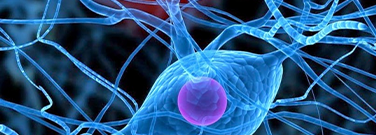Could Bioelectronics Be the Future of Medicine?

By Kylie Wolfe
Would you let a tiny machine wander inside your brain or body if it could improve your quality of life? Although you may say no today, the evolving field of nanotechnology could change your mind—in more ways than one.
Researchers at the Massachusetts Institute of Technology, including nanotechnologist and assistant professor Deblina Sarkar, are taking the steps needed to turn what sounds like a science fiction concept into a real-world possibility.
Merging Biology and Electronics
Researchers like Sarkar are looking to solve biological problems with electronics. Using nanotechnology, they may be able to help doctors find signs of Alzheimer’s and Parkinson’s diseases or other neurological troubles. Diseases like these affect millions of people globally, but their symptoms often stay hidden until it’s too late to change course.
That’s why super tiny electronic devices could help. Sarkar’s hope is to find a way to send them marching into the brain someday, so they can detect and reverse devastating disorders that are otherwise permanent.
An Ever-Changing Field
Existing bioelectronic implants are large and invasive, often damaging tissue and cells in their path. But, as Sarkar stated during a TEDx talk in Boston, her hope is that the field can eventually produce nanotechnologies that “match the size of biomolecular structures.” She goes on to say that “biomolecules are very fragile. And when their structures get disrupted, that leads to diseases.”
According to her presentation, her team at MIT is building transistors atom by atom. Their goal is to produce wireless, subcellular devices that can coexist with cells and not cause damage or disruption. But is it possible to stimulate the brain using something so small?
Signs of Progress
Sarkar and her team would say yes, it is possible, because they’ve already created a device known as the Cell Rover that can monitor cells from the inside. As part of a study published in 2022, researchers positioned the device in a mature frog egg cell using magnetic fields and found that they could stimulate it at a safe frequency—meaning it could communicate with them.
With tiny technology, it’s possible that scientists could one day locate abnormalities such as misfolded proteins in the brain, an early sign of Alzheimer’s. The Cell Rover may also be able to pull energy from cells and stimulate them like an electrode or even become a go-to alternative for invasive surgeries.
No matter what the future holds, it appears that Sarkar will be leading the way. She has a lengthy list of inventions in the bioelectronics field, won an award from the University of California Santa Barbara for her work, and is one of ten scientists to watch in 2023 according to Science News.
Discussion Questions
- What are a few other applications for microscopic machines in the world of medicine?
- Make a list of the pros and cons of sending a tiny device into the brain or body.